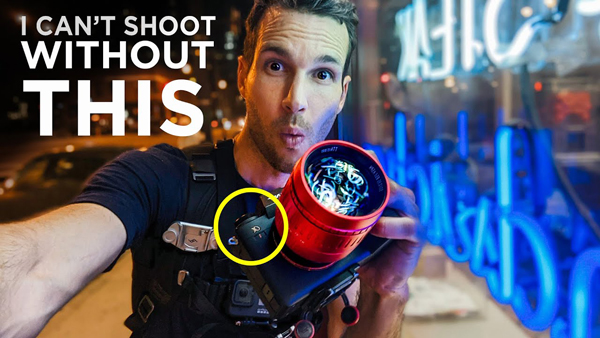Early repayment charges: what are they and how can you avoid them?
You could dramatically reduce your biggest monthly outgoing by moving to a cheaper mortgage deal, but it’s vital to factor in the impact of early repayment charges on the savings you make.
Switching to a different lender to benefit from the best mortgage rate or repaying your mortgage before your current deal ends may trigger an early repayment charge, or ERC, which can amount to thousands of pounds.
What are early repayment charges?
An early repayment charge is a penalty for ending your mortgage deal before its tie-in period expires. For example, if you’ve signed up to a five-year fixed rate, and you want to move to a cheaper deal a few years later, chances are, you’ll have to pay an ERC.
You might also have to pay an ERC if you’re paying off a chunk of your mortgage early, or if you’re fortunate enough, your entire balance.
The reason that lenders charge an ERC is because when they lend you money, they’re expecting to make a certain amount of interest from the deal. By repaying your mortgage early, they end up out of pocket.
Jane King, mortgage adviser at Ash-Ridge Private Finance, says: ‘When a lender provides a mortgage they factor in a profit margin. If the mortgage is redeemed early then some of that profit is lost. Therefore, the early repayment charge allows the lender to recoup some or all of this margin.’
The charge can be significant. For example, if there’s £150,000 left on your mortgage balance you’d pay an eye-watering £4,500 to leave a deal early with a 3% ERC.
Do all mortgages have early repayment charges?

Image credit: Future PLC/Lizzie Orme
No. An ERC doesn’t always apply. Whether you might face this fee depends on the type of mortgage you have. You won’t have to pay an ERC if you’re on your lender’s standard variable rate (SVR), and you want to move away from this. You’ll usually only be charged a small admin fee of, say, a few hundred pounds.
Some tracker and fixed rates mortgages also don’t carry an ERC. ‘But the rates are usually a little higher, particularly in the case of a fixed rate without an ERC,’ says David Hollingworth, associate director of broker L&C.
A mortgage broker can help you to find mortgage deals that have no, or low, ERCs, if they’re a concern for you. ‘Finding a deal without an ERC gives borrowers more flexibility. It’s suitable for those in receipt of a bonus, for example, or expecting an inheritance who might repay their mortgage early,’ says Harris.
What is a typical repayment charge?
ERCs vary dramatically, and usually range from 1% to 5% of your remaining mortgage balance. While a 1% ERC might not sound a lot, it can still amount to a fair sum – £2,000 on a mortgage balance of £200,000, for example.
The percentage charge for an ERC may gradually reduce on some deals from, for example, 5% in year one of a five-year fix to 1% the final year. In this scenario, if you had £150,000 outstanding on your mortgage, you’d pay an ERC of £7,500 in year one, which would gradually reduce to £1,500 in the final year of the deal.
How can I avoid an ERC?
Most lenders offer some leeway for borrowers to make overpayments of up to 10% of their mortgage balance without paying an ERC.

Image credit: Future Plc/Colin Poole
Chris Sykes, from mortgage broker Private Finance, says: “Different lenders allow different amounts from 0% to 50% of the balance to be repaid early, but 10% per year is the norm. Most lenders want to give borrowers an element of flexibility while not overextending this privilege to make a loan unprofitable to them.
“At the end of the day the lender wants to get paid back their funds and offering an overpayment allowance allows their risk to reduce faster on a loan over time as it increases the equity in a property.”
You may also avoid an ERC by choosing a shorter deal. This way, if your circumstances change such as selling up after a divorce or to move for work, you’ll hopefully be out of the tie-in period.
Bear in mind, though, that it’s always a good idea to do the sums to see if it’s worth paying an ERC. It may be worth paying a penalty to ultimately save more money on your mortgage repayments over the long term if you’re on an expensive standard variable rate (SVR). You’ll usually slip onto your lender’s SVR when your current mortgage deal ends, and the rate can hugely increase your monthly repayments. In this case, the interest you’re paying may outweigh the ERC, making it more sensible to pay the fee to switch rates.
What about when I remortgage or move house, do I have to pay an ERC?
Possibly, yes, if you’re not careful. If you’re remortgaging, check that your new deal doesn’t kick in until the end of your current deal to avoid paying an ERC. If you’re on your lender’s SVR, though, you won’t pay an ERC to remortgage.
As part of your moving house checklist, you might pay an ERC if you’re moving to a cheaper property. You’ll probably want to use the money released from the sale of your old home to reduce the size of your mortgage. But this may trigger an early repayment charge.
However, you might have a flexible mortgage that you can take with you when you move house. This is known as porting your mortgage, and most lenders allow you to avoid an ERC this way, provided you’re not repaying a large chunk of your mortgage in the process.
But if you’re borrowing more to move house, you’ll need to go through the mortgage affordability assessment process, and you may not be able to port your mortgage. If you cannot borrow enough, you may face an ERC if you have to take a mortgage from another lender.
‘It may be sensible to think about how long you are likely to be in a property or if you’re likely to move when considering the ERC period. Also think about whether you’re likely to need additional borrowing during the mortgage period,’ says Sykes.
The post Early repayment charges: what are they and how can you avoid them? appeared first on Ideal Home.













